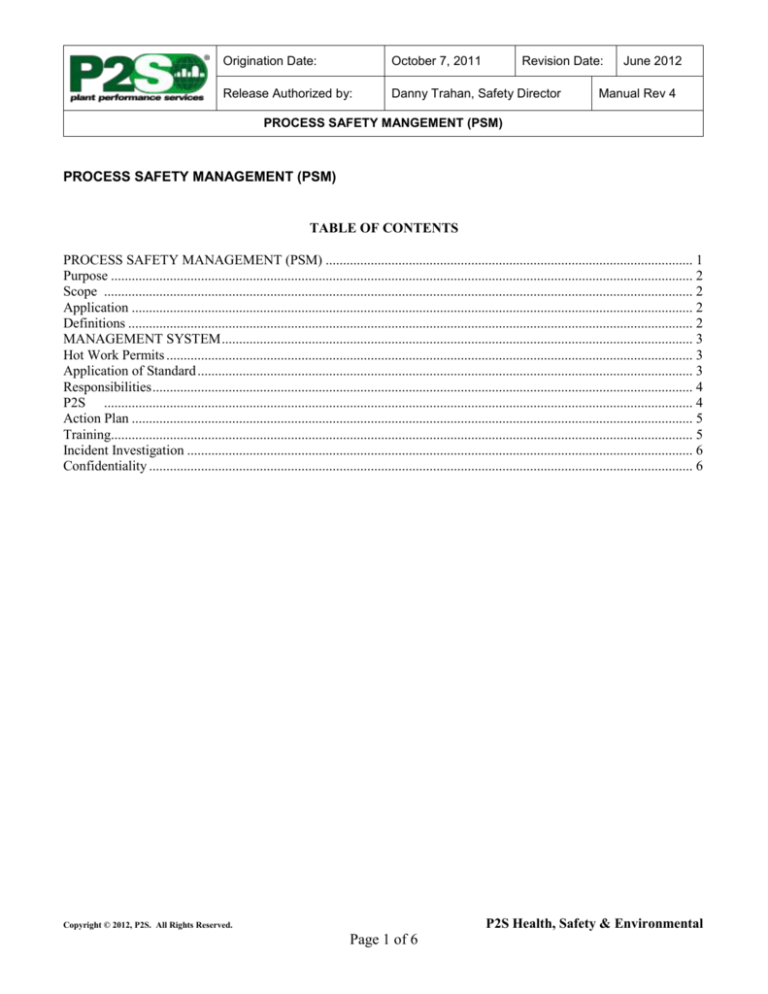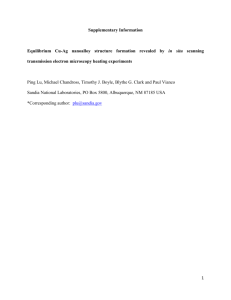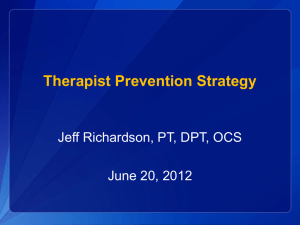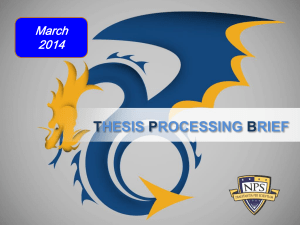
Origination Date:
October 7, 2011
Revision Date:
Release Authorized by:
Danny Trahan, Safety Director
June 2012
Manual Rev 4
PROCESS SAFETY MANGEMENT (PSM)
PROCESS SAFETY MANAGEMENT (PSM)
TABLE OF CONTENTS
PROCESS SAFETY MANAGEMENT (PSM) .......................................................................................................... 1
Purpose ........................................................................................................................................................................ 2
Scope .......................................................................................................................................................................... 2
Application .................................................................................................................................................................. 2
Definitions ................................................................................................................................................................... 2
MANAGEMENT SYSTEM ........................................................................................................................................ 3
Hot Work Permits ........................................................................................................................................................ 3
Application of Standard ............................................................................................................................................... 3
Responsibilities ............................................................................................................................................................ 4
P2S .......................................................................................................................................................................... 4
Action Plan .................................................................................................................................................................. 5
Training........................................................................................................................................................................ 5
Incident Investigation .................................................................................................................................................. 6
Confidentiality ............................................................................................................................................................. 6
P2S Health, Safety & Environmental
Copyright © 2012, P2S. All Rights Reserved.
Page 1 of 6
Origination Date:
October 7, 2011
Revision Date:
Release Authorized by:
Danny Trahan, Safety Director
June 2012
Manual Rev 4
PROCESS SAFETY MANGEMENT (PSM)
NOTE: The P2S facility does not fall under the PSM standards. This information is to be used as a guide only
should circumstances warrant it.
Purpose
This procedure provides minimum requirements for the management of hazards associated with processes using
highly hazardous chemicals. It defines P2S and client/owner responsibilities regarding actions that must be taken to
prevent or minimize the consequences of accidents involving highly hazardous chemicals in an effort to protect
employees.
Scope
This procedure defines Process Safety Management (PSM), including training requirements.
Application
This procedure applies globally to P2S and its subcontractors where the client/owner has developed a PSM
program.
Definitions
Facility
The physical structure (building, equipment, piping, valves, instruments, control logic, etc.) within which a given
process is operated.
Hazards
A chemical or physical condition that has the potential to cause injury to people, damage to property, or harm to the
environment.
Hazardous Substance
Any chemical or material that, when released or whose energy is released, can result in serious injury to personnel,
property damage, or significant environmental harm.
Hot Work
Work involving electric or gas welding, cutting, brazing, or similar flame or spark-producing operations.
Process
P2S Health, Safety & Environmental
Copyright © 2012, P2S. All Rights Reserved.
Page 2 of 6
Origination Date:
October 7, 2011
Revision Date:
Release Authorized by:
Danny Trahan, Safety Director
June 2012
Manual Rev 4
PROCESS SAFETY MANGEMENT (PSM)
Any activity conducted by employees that involves a highly hazardous chemical including use, storage,
manufacturing, handling, processing, or movement of the chemical, or any combination of these activities. Highly
hazardous chemicals are those that are at or above threshold quantities as specified by OSHA or in-country
regulatory agencies.
Process Safety Management (PSM)
Application of systems and controls to a manufacturing or chemical process in a manner that process hazards are
identified, understood, and controlled so that process-related exposures, injuries, and incidents are prevented.
MANAGEMENT SYSTEM
Each client/owner should develop a detailed Process Safety Management (PSM) Program suited to its specific
organizational structure and needs. The client/owner's PSM Program must address:
-
employee participation;
process safety information;
process hazard analysis;
operating procedures;
training contractors;
prestart-up safety review;
mechanical integrity;
hot work permit;
management of change;
incident investigation;
emergency planning and response;
compliance safety audit; and
trade secrets.
It should be re-emphasized that the responsibility for developing the on-site PSM Program lies solely with the
client/owner.
Hot Work Permits
Contract employees shall not perform hot work until a hot work permit is obtained from employer. The permit shall
document that the fire prevention and protection requirements in have been implemented prior to beginning the hot
work operations.
Application of Standard
The standard, as defined by the U.S. Occupational Safety and Health Administration applies to a process that
involves a chemical that is at or above the specified threshold quantities listed in Toxic and Reactive Highly
Hazardous Chemicals List (Attachment 2) of this procedure. Processes that contain or involve a flammable liquid or
gas in quantity of ten thousand (10,000) pounds (approximately 455 kg) or greater are covered. Other processes will
be covered due to their involvement of toxic materials that have lower threshold quantities. All covered chemicals,
P2S Health, Safety & Environmental
Copyright © 2012, P2S. All Rights Reserved.
Page 3 of 6
Origination Date:
October 7, 2011
Revision Date:
Release Authorized by:
Danny Trahan, Safety Director
June 2012
Manual Rev 4
PROCESS SAFETY MANGEMENT (PSM)
whether toxic, reactive, flammable, or explosive, will be listed on Toxic and Reactive Highly Hazardous Chemicals
List (Attachment 2) with their applicable threshold quantities.
This standard does not apply to hydrocarbon fuels that are used solely for workplace consumption as a fuel; e.g.,
propane used for comfort heating and gasoline for refueling. It also does not apply to flammable liquids stored
below their normal boiling point without chilling or refrigeration.
Responsibilities
Client/Owner
The implementation and development of the Project/Site Process Safety Management Program is the responsibility
of the client/owner. The specific portion of the client/owner PSM Program that directly impacts P2S employees are
the project’s/site's safe work practices. Safe work practices such as lockout/tagout, confined space entry, pipe
breaking, and control of personnel in areas around covered processes must be implemented. These safe work
practices must then be passed to P2S by the client/owner. P2S must then train their employees in these safe work
practices. Other client/owner responsibilities are:
-
Obtain and evaluate a contractor's safety performance and safety program before selecting them to work on
a covered process;
Inform P2S employees performing work on or near a process of the known potential fire, explosion or toxic
release hazards related to their work and the process;
Explain to P2S employees the applicable provisions of the emergency action plan;
Establish clear lines of communication between the client/owner and P2S employees who work in process
areas;
Periodically evaluate P2S's safety performance; and
Maintain an injury and illness log related to P2S work in process areas.
P2S
OSHA 1910.119 (h) explains the provisions that are applicable to P2S employees. Only those P2S employees
whose activities bring them into direct contact with a process unit covered by the rule are subject to the standard
provision. The standard applies to P2S employees who perform maintenance or repair, turnaround, major
renovation, or specialty work on or adjacent to a covered process. In these instances P2S responsibility is to:
-
Verify that each P2S employee has the necessary job skill training and is qualified to safely perform his/her
assigned task;
Train each P2S employee in the known fire, explosion, or toxic release hazards associated with his/her job
and the applicable provisions of the emergency action plan;
Document and verify by testing that each P2S employee received and understood the training. Employees
who do not understand the training may not be utilized to work in or adjacent to a covered process area;
Audit the performance of P2S employees to confirm that they are working safely and that they follow all
applicable work procedures and safe practices of the facility;
Advise the client/owner of any unique hazards presented by P2S’s work or any hazards found by any P2S
employee; and
P2S Health, Safety & Environmental
Copyright © 2012, P2S. All Rights Reserved.
Page 4 of 6
Origination Date:
October 7, 2011
Revision Date:
Release Authorized by:
Danny Trahan, Safety Director
June 2012
Manual Rev 4
PROCESS SAFETY MANGEMENT (PSM)
-
Engineering/design operations where P2S employees may be directly affected by another contractor's work
will be included.
Not perform any hot work until a proper Hot Work Permit has been issued, reviewed and signs off on by all
P2S employee’s working on the project.
Action Plan
The first step in the implementation of the Process Safety Management Program is to obtain the client’s/owner’s
safe work practices, contractor procedures, and control procedures that are necessary to protect P2S employees who
are subject to PSM. A sample form letter asking for that information is shown as Attachment 1. Once those
procedures are acquired, other steps that should be taken are listed below.
-
-
Identify each employee who is or has the potential to be exposed to chemicals or processes containing
chemicals that are regulated by the standard.
Review all P2S work tasks or assignments to establish client vs. P2S responsibilities in regards to actions to
be taken to prepare the employee, equipment or area for work to be done.
Verify individual competency in a particular discipline; i.e., pipefitting, millwrighting, instrumentation.
Confirm that each employee is trained in the client/owner-supplied safe work practices or procedures
necessary to safely perform his/her job.
Review all work permits to verify that they incorporate the proper information that identify the name of all
chemicals that employees will have potential exposure to so that MSDS can be reviewed and the necessary
precautions taken before beginning work.
Review and establish the need and training requirements for all personal protective equipment that shall be
used during work on process equipment.
Prepare a record which contains the identity of each employee, date of training and the means used to
verify that the employee understood the training.
Each project/site should note that the process safety management standard is performance oriented. The
development of each project/site PSM Program will be dependent on resources available. Assistance may be
obtained from P2S’s Corporate HSE Department. To receive assistance concerning a PSM Program, each
project/site should contact the appropriate Regional HSE Director/Manager.
Training
Each P2S employee presently working on or around a covered process and each new employee, before working on
or around a newly assigned process, must be trained. This is P2S responsibility. This training must provide an
overview of the process and must emphasize the specific safety and health hazards, procedures, and safe practices
applicable to the employee's tasks.
P2S employees should receive refresher training as often as necessary and at least annually. P2S must document
that each employee received and understood the training. A record of training that contains the identity of the
P2S Health, Safety & Environmental
Copyright © 2012, P2S. All Rights Reserved.
Page 5 of 6
Origination Date:
October 7, 2011
Revision Date:
Release Authorized by:
Danny Trahan, Safety Director
June 2012
Manual Rev 4
PROCESS SAFETY MANGEMENT (PSM)
employee's date of training, and means (test) used to verify that the employee understood the training, must be
maintained. Examples of training to be provided would involve safe work practices and programs such as:
-
hazard communication;
opening of process equipment and piping;
lockout/tagout of hazardous energy source;
entry into confined spaces; and
control of ignition sources (hot work permit).
Incident Investigation
P2S must immediately report all accidents, injuries and near misses. An incident investigation must be initiated
within 48 hours. Resolutions and corrective actions must be documented and maintained 5 years.
Confidentiality
P2S must inform employees that they must respect the confidentiality of trade secret information released to them
and where exposure or access to trade secrets exist. Violation of this confidentiality is grounds for disciplinary
action up.
P2S Health, Safety & Environmental
Copyright © 2012, P2S. All Rights Reserved.
Page 6 of 6







